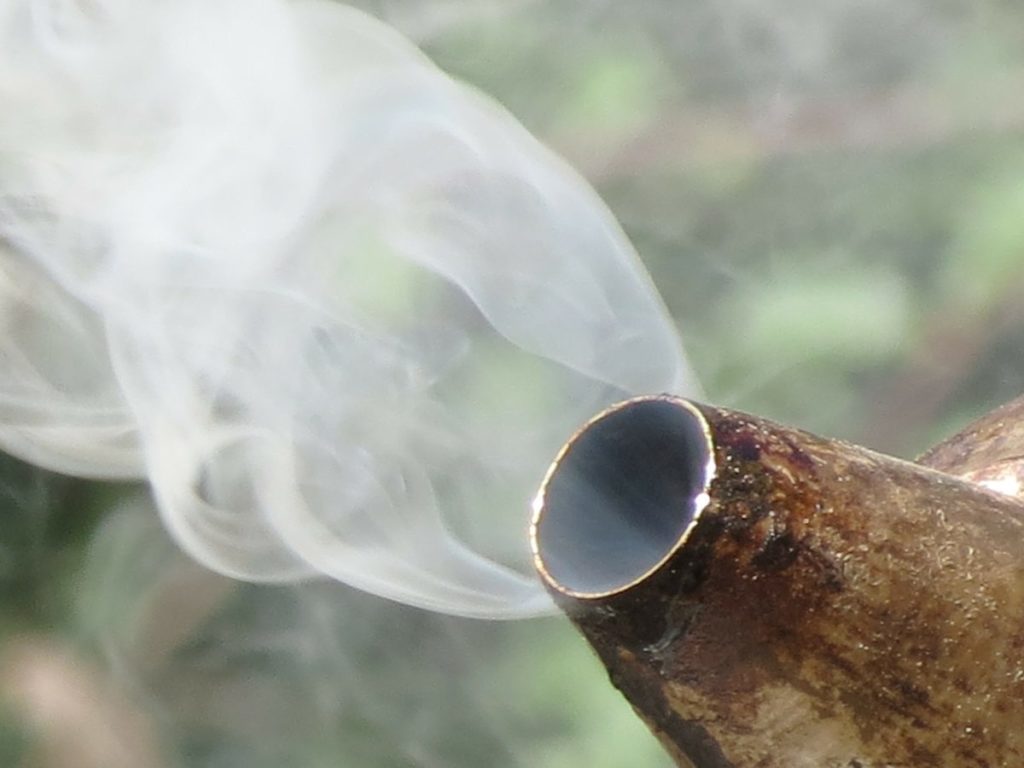Answers to common questions about using beehive smokers with honey bees.
Why do beekeepers smoke bees?
Beekeepers have always used smoke when handling the hive – there are even illustrations of the practice from ancient Egypt! Smoke is known to ‘calm’ or ‘soothe’ bees. Therefore using a beehive smoker makes hive maintenance easier and safer with minimal risk of stings.
Why does smoke calm bees?
Though scientists are not 100% certain, the smoke is believed to work in two main ways:
- By blocking the bees’ pheromone sensitivity. This means that the intruder alert/attack message isn’t spread around the hive, reducing the risk of stings
- By stimulating the bees’ instinctual response to wildfires. When bees believe a fire is coming, they fly into the hive and start gorging themselves on honey. This is in preparation for leaving the hive to search for a new home. So, the bees are contained and distracted while the beekeeper works. Plus, bees who are full of honey are also believed to be less likely to sting!
Does smoke hurt bees?
No, as long as you don’t smoke them at too high a temperature. Always let your beehive smoker smoulder for a while before using it on the hive.
Although smoke does put the bees on alert, ultimately there is far less harm to the bees because they are not stinging the beekeeper. Of course, if they did sting, they would die.
Their pheromone sensitivity returns approximately 10 to 20 minutes after the smoke is gone. And since the smoke is only around briefly, they won’t yet have abandoned the hive.
How to use beehive smokers
- Select your fuel. Fuels that work well include wood shavings (pine is good) or pine needles. These are good ‘kindling’ fuels that make building the fire easy. You may also add some heavier, longer-burning fuel such as wood chips on top. You can also try our Chinese Herbal Blend Smoker Fuel.
- Select your starter. Newspaper, cardboard or a similar non-toxic paper product is good. Some people also use small pinecones. Scrunch or roll up some of your starter into a ball. It will need to burn long enough for the fuel to light and establish a fire.
- Light your starter. Lean the barrel at angle and light it up with a long match or stove lighter. Alternatively, carefully light the starter first then drop it in the barrel.
- Start building the fire. Pump the bellows a couple of time to help the fire, then add a little bit of kindling fuel. Pack this down using a hive tool or similar.
- Fill the smoker. Continue pumping the bellows a few times in between adding and packing more fuel. Don’t pack too tight or too loose – the fire either won’t burn well or will burn too quickly. Once the fire is well established you can add some larger, slow-burning fuel.
- Wait until the fire is smouldering. Allow it to sit and burn a few minutes until it is smouldering so that the smoke isn’t too hot.
- Smoke the hive. Two or three puffs of smoke at the entrance of the hive should be enough. Don’t over-do it.
- Wait for the smoke to do its thing. You’ll need to let the smoke work its magic for up to 10 minutes. When you open the hive, you can add a few more puffs and then begin work.
View our bee smokers and fuel in our online shop.

Visit the Bee2Bee online shop for beekeeping equipment and supplies.




